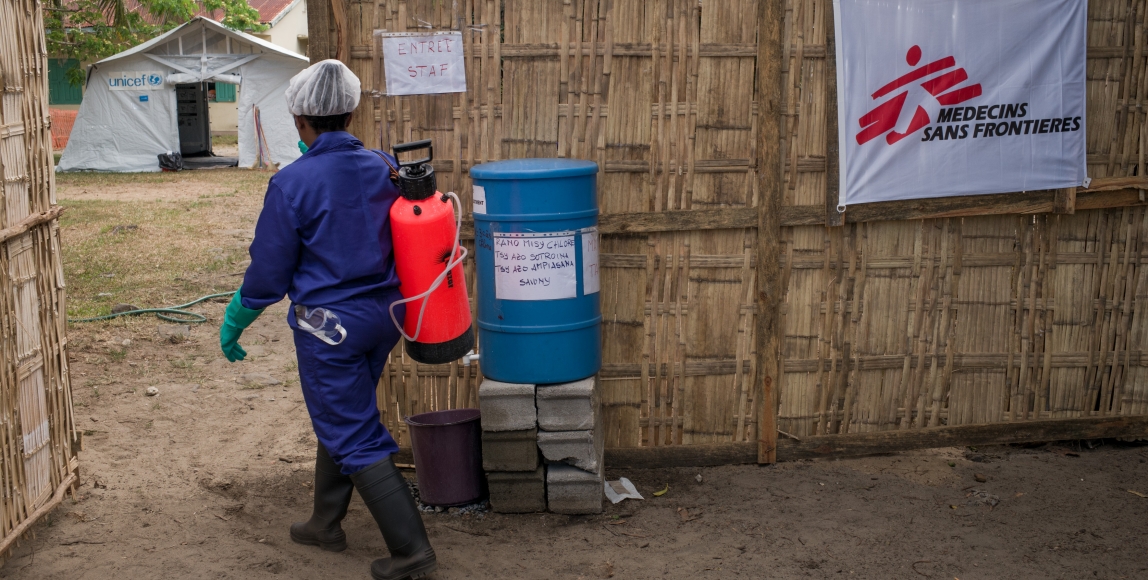
The World Health Organisation (WHO) identified South Africa as a “priority country†for bubonic plague preparedness. But there’s no reason for panic. Warnings like these are normal for countries with travel and trade links. The Daily Vox explains what you need to know about the risk assessment.
The WHO may have issued a bubonic plague warning to South Africa but there’s little reason to panic. Dr. John Frean, from the National Institute for Communicable Diseases (NICD), told The Daily Vox the only people in South Africa at potential risk are those who come in close contact with an infected person entering the country. Frean said there are processes in place to detect, diagnose and treat infected persons entering the country, and that at this point the public does not have to take any precautions against the plague. He added that government departments like Port Health and Communicable Disease control coordinators are ready to deal with any imported cases.
The NICD has issued an advisory for any travellers returning from Madagascar to monitor their health for 15 days and to seek medical care if they display any plague-like symptoms. The symptoms for bubonic plague include fever, pain and swollen lymph nodes in the groin, armpit or neck. The symptoms for pneumonic plague include shortness of breath, chest pain, cough and bloody sputum.
Risk assessment
Ethiopia, Kenya, Mauritius, Comoros, La Reunion, Tanzania and the Seychelles – which also have travel and trade links to Madagascar – have also been listed as priority countries for the plague. Following a risk assessment, the WHO listed the regional risk of spread as moderate, while the international risk of spread is low.The risk assessment of ‘very high’ is only on a national level for Madagascar. The WHO is working with South Africa and the other countries to increase awareness about plague and to enhance surveillance for the disease.
The South African department of health issued a travel advisory to South Africans going to Madagascar following news of the first confirmed plague deaths in Madagascar. The department warned travellers to avoid highly populated areas and to wear surgical masks while in transit. All airline companies have been advised to look out for passengers suspected of being ill. According to the department, provincial outbreak response teams have been alerted to enhance preparedness and implement response measures in the event that a case of plague is detected in the country.
Earlier this month, a South African basketball player who had contracted the plague in Madagascar was successfully treated. He returned to South Africa and was said to no longer pose a health risk.
Plague is not unusual in Madagascar. According to the WHO there are about 400 cases in the country each year, but these do not usually affect large urban areas. Doctors Without Borders South Africa (MSF), has recorded cases of bubonic plague in Madagascar between September and April almost every year. The country is usually equipped to deal with these. In 2016, out of 275 cases, there were only 63 deaths. However, this time, there were 1 133 cases and 120 deaths at last count. Acccording to MSF, this is because most cases in the past were of bubonic plague, while this year’s cases have been of pneumonic plague, which is more deadly.
Bubonic plague can be effectively treated with antibiotics but it must be diagnosed and treated quickly. Health and aid agencies are working to ensure those at risk receive the treatment they need. The WHO has delivered 1.2 million doses of antibiotics to Madagascar and secured an additional $1.5-million to treat patients and contain the outbreak.
“Plague is curable if detected in time… the faster we move, the more lives we save,†said Dr Charlotte Ndiaye, WHO representative in Madagascar.
For more information on plague, see the NICD’s plague infographic.








